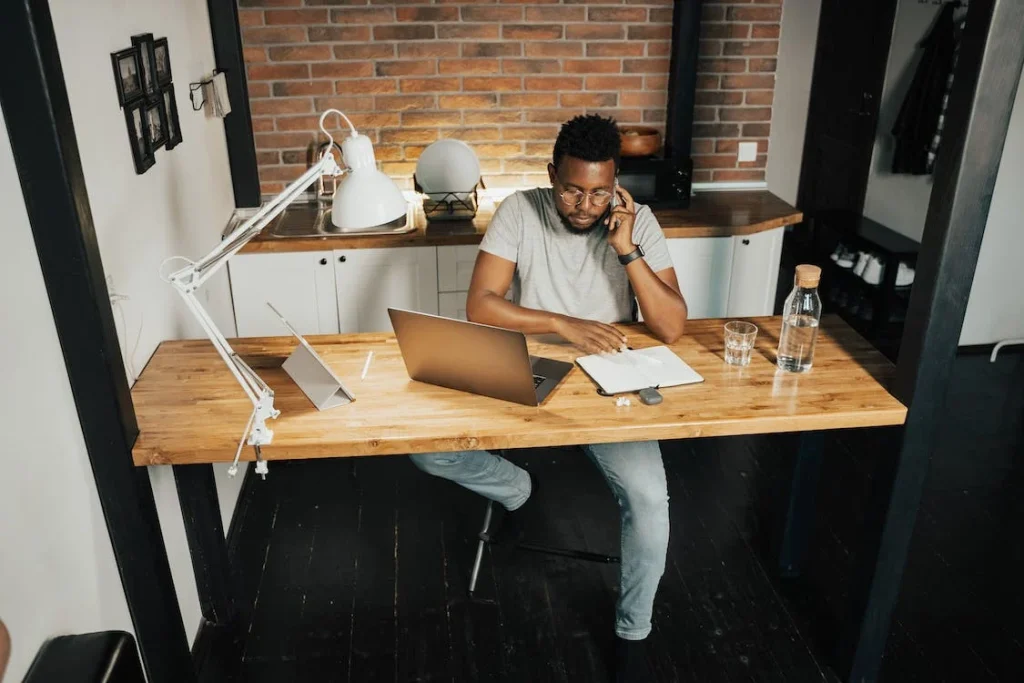With the rise of remote work, having a productive home office has become increasingly important. A well-designed and organized workspace can significantly impact your focus, motivation, and overall productivity.
Whether you are a freelancer, a remote employee, or an entrepreneur, implementing the right strategies can help you optimize your home office environment. In this article, we will discuss seven tips to create a productive home office that will enhance your efficiency and work satisfaction.
1.Designate a Dedicated Workspace:
One of the first steps in establishing a productive home office is to designate a specific area solely for work. Separating your workspace from the rest of your living environment helps create a mental boundary, signalling that it’s time to focus and be productive. Choose a well-lit area with minimal distractions, ideally away from high-traffic areas. This will allow you to concentrate better and maintain a professional mindset.
2.Ergonomic Setup:
Investing in ergonomic furniture and equipment is essential for maintaining good posture and preventing physical strain. Your desk and chair should be adjustable to support a comfortable sitting position, ensuring your feet are flat on the floor and your wrists are in a neutral position. Consider adding a footrest, a keyboard tray, or an adjustable monitor stand to further customize your setup and minimize the risk of long-term health issues.
3.Organize and Declutter:
A cluttered workspace can lead to a cluttered mind. Keep your home office organized by implementing effective storage solutions. Use shelves, drawers, or filing cabinets to store documents, supplies, and other essential items. Minimize visual distractions by keeping your desktop clean and tidy. Adopting a minimalist approach to your office design will help create a calm and focused atmosphere conducive to productivity.

4.Adequate Lighting:
Proper lighting plays a vital role in maintaining focus and reducing eye
strain. Position your desk near a window to take advantage of natural light, but be mindful of glare and direct sunlight that may cause discomfort. Complement natural light with well-placed artificial lighting, such as a desk lamp or overhead lights, to ensure a well-illuminated workspace. Adjustable lighting options allow you to adapt to different tasks and personal preferences.
5.Establish a Daily Routine:
Having a routine is crucial for productivity, even when working from home. Set a consistent schedule, defining specific work hours and breaks, to establish a sense of structure and discipline. Start each day by planning your tasks and prioritizing them accordingly. This practice helps you stay focused, manage your time effectively, and maintain a healthy work-life balance. Remember to include short breaks and physical activity to recharge and improve cognitive function.
6.Reduce Distractions:
Working from home can present numerous distractions, such as household chores, family members, or personal devices. Minimize these distractions by setting boundaries and communicating your work schedule to those around you. Consider using noise-cancelling headphones to block out background noise and stay focused. Additionally, use productivity apps or browser extensions to limit access to social media or other non-work-related websites during designated work hours.

7.Personalize and Inspire:
While maintaining a professional environment, don’t forget to personalize your home office to reflect your tastes and interests. Add artwork, plants, or meaningful objects that inspire and motivate you. Choose colors that enhance your mood and productivity. Surrounding yourself with elements that resonate with your personality can boost your creativity and overall satisfaction with your workspace.
Designing a productive home office is key to maximizing your efficiency and achieving success in your remote work endeavors. By following these seven tips, you can create an environment that supports your focus, enhances your well-being, and fosters creativity. Remember, an optimized home office is not only about functionality but also about creating a space that inspires and energizes.













